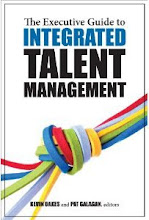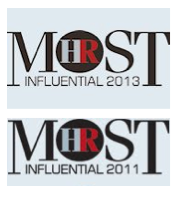 You may have thought from my last post that I’ve got quite worked up about ‘Calculating Success’. Well I haven’t really, but I am feeling quite irate at John Boudreau’s latest, ‘Transformative HR’.
You may have thought from my last post that I’ve got quite worked up about ‘Calculating Success’. Well I haven’t really, but I am feeling quite irate at John Boudreau’s latest, ‘Transformative HR’.
First of all: “Talent management is not an imprecise art form. Rather, it is a rigorous science based on solid numbers.”
It’s complete nonsense of course, and I don’t understand how Boudreau gets away with it.
He makes the comment in particular relation to a case study of Deutsche Telekom introducing job families to support succession management. Let’s check the details shall we:
- Job families – a common taxonomy of 60 job families with a number of subfamilies. For example HR was a job family with subfamilies such as HR Development and HR Business Partner. OK, so if I’m an HRBP this means I’m going to be doing exactly the same job as every other business partner in an organisation with 260,000 people working in 50 countries. I doubt it.
- Competency models – were tailored to local business units through the use of additional competencies – so not quite an apples to apples comparison is it then?
- Performance ratings and readiness categories – based upon perfect assessments in every case no doubt? What rot. Unless DT managers are different to just about every organisation I’ve ever been involved in the readiness assessments in particular will be little better than finger in the air estimates. Not the sort of stuff that informs rigorous science I’m afraid.
I’m not saying it’s not a good example of an analytics based approach, I sort of think it is – better than most of the examples in Calculating Success anyway. But a rigorous science???!!! I think not.
Actually, what makes it an interesting and useful case study is the creativity of the approach (and there’s no evidence that the creativity has been generated through learnings from using analytics either) eg the way that readiness is judged for vertical or horizontal movement.
Secondly: the focus on pivotal talent. This is a complete red herring. It’s all value for money stuff. OK, if nothing is changing it makes sense to invest more in sweepers than it does the Mickey Mouse(s – you’ve heard the joke lots of times by now, right – there’s only ever one Mickey Mouse) because the sweepers are more pivotal – ie a certain investment can produce a bigger shift in performance than it can with the MM(s). But what organisation isn’t changing these days? A much better focus is on the organisational strategy. If this requires change in the role of either the MM(s) or the sweepers, then these are the most important group/s. Importance just doesn’t make sense on its own, it all depends upon what the organisation is trying to do.
Pivotness is bad logic and it leads to bad decisions eg “An organisation might do well to acquire a 90th percentile performer in the R&D scientist role and be satisfied with a 50th percentile performer in the controller role.” It’s the sort of logic that Beatty uses too and it’s just wrong. You don’t necessarily want to pay over the odds in all these positions but that’s only a bother if pay is the only element in your employee offer (in which case you’re definitely not doing transformative HR). You still want the best person you can get in all your different roles. Deliberately seeking out or even just being satisfied with anything less than this is just nuts.
Boudreau’s favourite question, “Where would improving something make the biggest difference to success?” results in then same, value for money results. You can get benefits out of this, and particularly out of making the improvements. But you’ll find greater benefits in asking “What do we need to improve to support our strategy?” (adding value) or even “How could we develop new capabilities which would enable us to set new strategic objectives?”.
Other than these things, the book is actually very similar to Calculating Success, including some of the same case studies (particularly IBM and RBS) which you could take to indicate this isn’t yet that popular an area, or that most organisations have a more nuanced approach to the use of analytics.
There are a couple of bright points – I love the example of Shanda Games and its 100 point, gamified grading system which I first came across in Boudreau’s presentation at HR Technology North America last year, and still rave about.
In the book, Boudreau also writes about Shanda providing each employee with a virtual city. Employees are awarded virtual objects for completing tasks or projects and these can be used to decorate their cities. Each city owner is also able to decide on what their city’s weather for the day is going to be, and Shanda intends to measure the mood of the organisation by scanning how nice the weather is each day – nothing to do with analytics though (although presumably Shanda could do an analysis on the number of virtual clouds?).
And there’s a good chapter on risk management too. I do quite a bit of work in this area myself but I’ve never used anything like Boudreau’s inverse heat map which I think is a really good idea.
So do read the book, but keep that pinch of salt close by as you do.
Also see my criticism of Beyond HR. (I never got around to reviewing Retoooling HR but I didn’t like this much either.)
And: The Five Most Important HR Analytics
- Consulting - Research - Speaking - Training - Writing
- Strategy - Talent - Engagement - Change and OD
- Contact me to create more value for your business
- jon [dot] ingham [at] strategic [dash] hcm [dot] com
.





























0 comments:
Post a Comment
Please add your comment here (email me your comments if you have trouble and I will put them up for you)